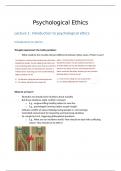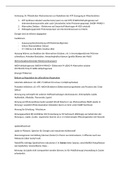1.4.1 Brain and Body
The Nervous system:
Neurons → form nerves
carry information to brain and respond
86 billion neurons
Nervous system covered by connective tissue
subarachnoid space: fluid filled→ cushion brain
cerebrospinal fluid: clear fluid→ blood plasma
Cranial Nerves
General definition: connected from the brain – they control vital reflexes
Central Nervous system:
brain and spinal cord
Peripheral Nervous System: (PNS)
cranial nerves, spinal nerves, peripheral ganglia
efferent: carry away to other parts (muscles/glands)
afferent: sensory activated by external stimuli → axon directed towards Cns to
convey sensory information
cranial nerves: peripheral nerve attached directly to the brain-parasymphatetic
1. Sympathetic Nervous System:
Location: ganglia in lumbar (lower back) & thoracic (chest) regions of spinal cord
Function: prepares the body for action, arousal, stress
Expends energy
Phrase: “fight or flight” response
2. Parasympathetic Nervous System:
Location: nerves in brain &sacral (lower back) region
Function: calms the body – both psychologically & physiologically
Conserves energy
Phrase: “rest & digest”
,Autonomic Nervous System (ANS): reflex loop, involuntary internal environment
symphatetic: higher heart rate, stress response
→ expenditure of energy from reserves
parasymphatetic: increase blood flow, poop, nap
→ psychological relaxation, conserves energy -rest and digest
Somatic nervous system: receive sensory information and control movements
→ regulates inetraction external environment
Motor neuron:
https://lh6.googleusercontent.com/1_SgIdjln2doJqMFa1kp83qmU24t-
1XDPjzqC7qf4t98eZfP-
1CaXMEq8Y1UbwMBoVs1Jq4EOJ2dxQmzWHVR4ZBAL6HpLFBtajLuUkBmnrqdVPtDn
9_eAVncD3SAjR92sDhWxC3k
Neurons: cell that transmits information in the brain
Structure of a neuron (Take-home assignment on Canvas)
A: dendites
B: nucleus
C: cell body
D: axon
E: branches
F: presynaptic terminals
Dendrites → Collection of information from other neurons
Cell body → Integration of incoming information and generation of outgoing signal to the
axon
Axon → Passing the signal over long distances
,Axon branches → Passing the signal in different directions
Terminal buttons/terminals → Here the signal is passed to the dendrites of other neurons or
other cells
Nucleus → Location of DNA (the genetic information)
Myelin Sheath: fatty insulating material that allows action potential – protects the
axon & speeds up the transmission of the input
Extra Question: Is regenerative power only found in schwann’s cells?
So, less regenerative power for the CNS?
located Spinal cord
axon much longer
types of nerons:
sensory neurons: from senses to brain -afferent; carry msgs from sensory receptors (eg.
touch) to CNS/PNS
motor neurons: from brain to muscles/glands- efferent
3. Interneurons/Relays: connect sensory neurons and motor neurons
efferent: carry information towards the CNS
afferent: carry information away from the CNS
Synapse: contact to next neuron
Membrane potential → voltage differential
inactive 70
Ion channels→ more than 300 different
Action potential→ Iron channel open
inside positive, outside negative
Sodium Potasium pump
billions of neurons make sense of information
neurons develop dendrites and axons and establish synaptic connections
Dendrite: collection of information from other neurons
nucleus: location of DNA
soma: integration of incoming information and generate outgoing signals to axon
axon: pass signals over long distances
, axon terminal/button: pass signals to other neurons/cell
Early development of the brain:
neural tube forms when embryo is about 2-3 weeks
after 11 weeks→ expanding Cerebral cortex
Telencephalon→ Cerebrum
Brainstem: Diencephalon, Mesencephalon, Metencephalon, Myelencephalon not Cerebellum
Cerebellum:
Body control
receives visual, auditory, somatosensory information
coordinating and smoothing effects on movements
Pons
sleep and arousal
information from cerebral cortex to Cerebellum
Medulla oblangata:
regulation cardiovascular system
control movements
Thalamus:
sorts data
most neural input into cerebral cortex
Hypothalamus:
controls autonomic nervous system and endocrine
organize behaviour→ feeding, fleeing, mating, fight
produce hormones




